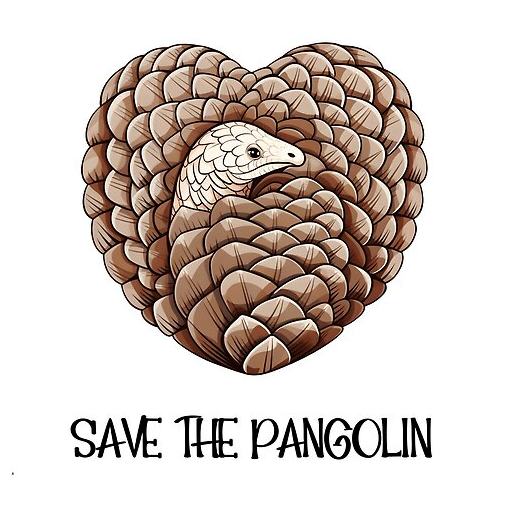Last Updated on January 1, 2024 by Iain S

Hey there, fabulous readers! Get ready to swoon over today’s heart-melting Redbubble design, all about pangolin love.
The Heart of the Design: The Pangolin
Picture a pangolin – yes, a pangolin – curled up adorably in the shape of a heart. This isn’t just any old design; it’s a pangolin with a mission, accompanied by the slogan “Save The Pangolin.”
What’s a Pangolin?
Pangolins are unique, scale-covered creatures that look like they’ve stepped out of a magical storybook. They’re shy, nocturnal, and curl up into a ball when threatened.
The Pangolin’s Plight
Unfortunately, pangolins are one of the most trafficked mammals in the world. That’s where our design comes in. It’s not just a cute image; it’s a statement, a conversation starter, and a way to spread awareness for these adorable creatures.
Design Details
The design features a detailed, scale-covered pangolin with a playful expression, set against a vibrant background. The slogan “Save The Pangolin” is straightforward, powerful, and a call to action.
Fashion with a Purpose
Imagine wearing this design on a T-shirt, becoming an ambassador for pangolin conservation. This design isn’t limited to T-shirts, but extends to phone cases, tote bags, and coffee mugs, turning every item into a statement piece.
Why It Matters
Fashion is about making a statement and standing up for those who can’t do it themselves – like pangolins.

The “Save The Pangolin” design is more than just a pretty picture. It’s a movement, a cause, and a way to make a difference. Head over to Redbubble, check out this design, and join the fight to save the pangolins.
Pangolin Love – The Science
Pangolins, often referred to as scaly anteaters, are fascinating mammals belonging to the order Pholidota.
Here we’ll delve into various aspects of these unique creatures, including their physical characteristics, behavior, diet, and reproduction.
Taxonomy
Pangolins are part of the Manidae family, which comprises three genera: Manis, Phataginus, and Smutsia.
While Manis is found in Asia and includes four species, Phataginus and Smutsia are native to sub-Saharan Africa, each with two species.
These remarkable creatures vary in size, ranging from 30 to 100 cm (12 to 39 inches). Interestingly, there are also known extinct pangolin species.
Physical Characteristics
Pangolins boast large, protective keratin scales that cover their skin. These scales are similar in composition to human fingernails and toenails, making pangolins the only mammals with such a feature.
When threatened, they can curl up into a ball, utilizing their overlapping scales as armor. These scales are sharp, adding an extra layer of defense against predators.
Their tongues are remarkably long, allowing them to capture their primary prey: ants and termites. Pangolins have short legs with sharp claws for digging into ant and termite mounds and climbing.
Behavior
Pangolins are primarily nocturnal creatures, relying on their acute sense of smell to locate insects.
While some species are active during the day, others spend most of their time sleeping, curled up into a ball. They exhibit both bipedal and quadrupedal stances and are surprisingly good swimmers.
Diet
Pangolins are insectivores, with ants and termites making up the majority of their diet. They are selective eaters, usually focusing on one or two species of insects, even when there are various options available.
These creatures can consume between 140 to 200 grams (5 to 7 ounces) of insects per day. Their poor vision is compensated for by their acute sense of smell and hearing.
Reproduction
Pangolins are solitary animals that come together only for mating. Mating usually occurs at night, near watering holes, with males marking their locations with urine or feces to attract females.
If competition arises, males use their tails as clubs to vie for the opportunity to mate.
Gestation periods vary by species, ranging from about 70 to 140 days.
African pangolins typically give birth to a single offspring, while Asiatic species may have one to three.
Newborn pangolins are soft and white, with their scales hardening and darkening over several days. Mothers provide care and protection for their young, with weaning occurring around 3 months of age.
At 2 years old, the offspring reach sexual maturity and are left to fend for themselves.
For more about GloxxiDesign.


